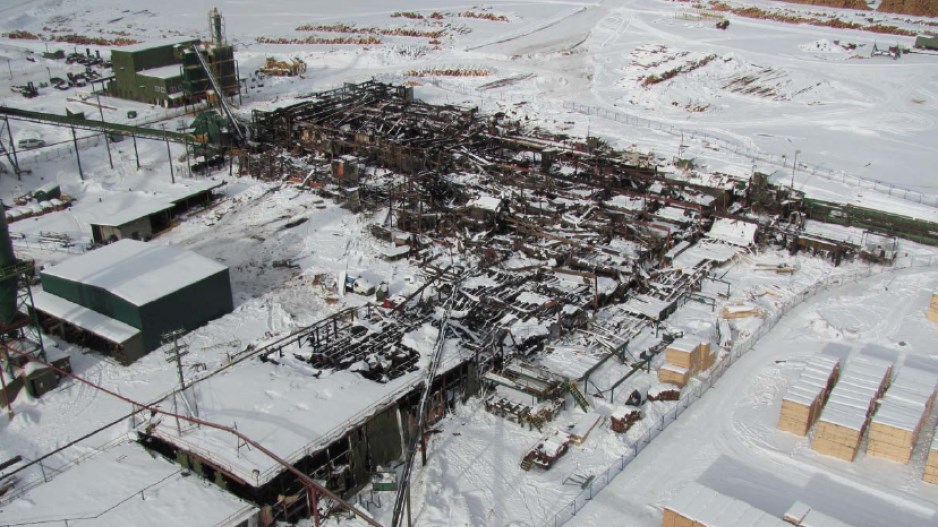WorkSafeBC's investigation into the fatal sawmill fire that killed two workers in Burns Lake may not have met standards needed for criminal charges, but the worker safety watchdog could still take action against the sawmill's owners under the Workers Compensation Act.
WorkSafeBC today released a report on the explosion and fire January 20, 2012, at the Babine Forest Products sawmill. The explosion killed two workers and injured 20 others.
The report concludes that the explosion and fire was likely caused by excessive wood dust and -40 Celsius temperatures that froze fire mitigation equipment, like ventilation systems and misters. It also concludes the fire was preventable.
"The investigation shows that the explosion and fire that destroyed the sawmill constituted a preventable incident," the 87-page report concludes.
"WorkSafeBC officers are currently considering enforcement action under the authority of the Workers Compensation Act in regard to Babine Forest Products," WorkSafeBC states in its overview of the incident report.
After conducting its investigation, WorkSafeBC handed it over to the BC Criminal Justice Branch.
Last week, the Crown announced it could not proceed with any criminal charges, saying some of the evidence gathered in the investigation would be inadmissible in a court of law.
WorkSafeBC did not follow procedures required in a criminal investigation, such as obtaining search warrants or informing those interviewed of their Charter rights.
Today (January 16), WorkSafeBC released a detailed incident report, which identified problems with wood dust that could have been mitigated.
In the week leading up to the incident, -40 Celsius temperatures froze up some of the dust mitigation equipment.
A misting system, for example, had recently been upgraded, but was "not operational due to the extreme cold weather which caused frozen and broken water pipes."
A dust collection system also appears to have become plugged. It had been running along with misters and became plugged up when filter bags froze.
The report also concluded that the dust collection system for the mill was undersized and "ineffective." It also concludes that supervisors were not adequately monitoring the site.
"The sawmill management had known for some time that the dust collection system was undersized for this type of operation, and in fact had made a down payment on replacement or additional baghouse systems in 2011," the report states.
"It was determined at the time that these improvements could not be made as the mill's power system was already working at maximum capacity and could not handle additional electrical loading.
"The electrical upgrade was planned and preliminary work had commenced before the incident occurred. While the electrical upgrade was being done, there was no reduction in production; in fact, production levels increased."
The report concludes the fire was most likely caused by dust buildup in the motor of a conveyor system.
"The compacted wood dust had likely become so thick that the V-belts were fully in contact with it all the time, and sufficient friction was generated to ignite the wood dust."




